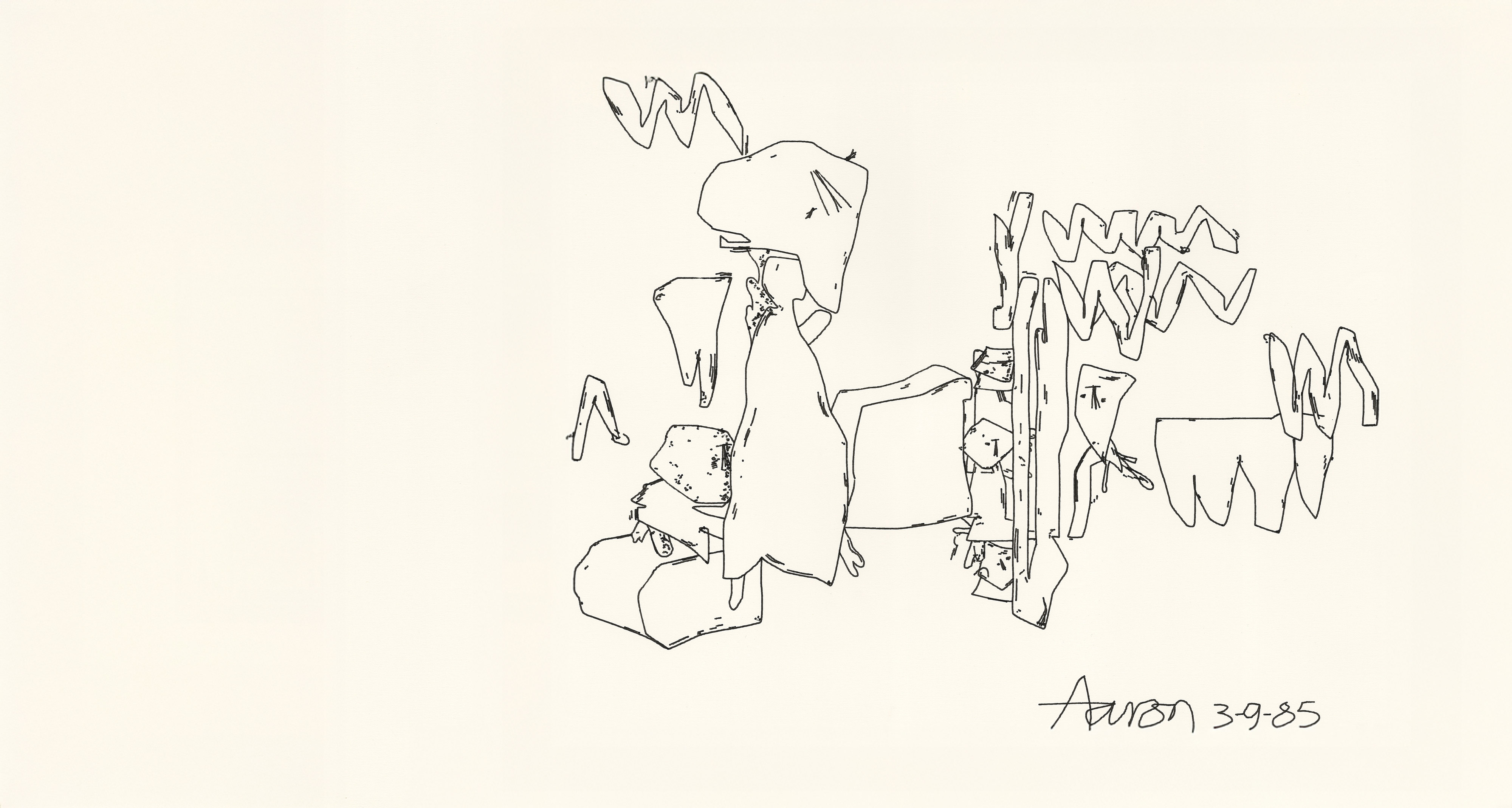London
Harold Cohen
AARON at Tsukuba '85
Oct 16 - 28, 2025

Overview
“Well, I guess if it ever signed a painting on its own, that would signal the end of all debate on the matter of its intelligence.“
- Harold Cohen
Details
AARON at Tsukuba '85 - In collaboration with Gazelli Art House, Verisart and the Harold Cohen Trust.
Harold Cohen’s AARON at Tsukuba ’85 drawings are rare witnesses to the first sustained public presentation of autonomous computer art. Created live inside the U.S. Pavilion at the 1985 World’s Fair in Tsukuba, Japan, they were produced by Cohen’s artmaking programme AARON as visitors watched a mechanical plotter generate original ink drawings in real time. Guides explained that AARON “never draws the same drawing twice,” and the installation was singled out in the Pavilion’s report as one of its most popular exhibits.
Heads of state and royalty saw AARON at work. Prime Minister Yasuhiro Nakasone was photographed at the plotter, and Emperor Hirohito extended his official tour to ask questions, a rare protocol exception noted by Pavilion staff. Public response matched the VIP attention. In an open‑ended visitor survey conducted on site, AARON was the top specifically named favourite in the U.S. Pavilion.
What also set the Tsukuba works apart was their unusual inscriptions, which seemed to suggest the possibility of autonomous authorship. Contemporary Japanese press captured the moment with headlines about “computers as artists,” describing AARON as a system that “thinks while drawing.”
Release Information
Each of the 100 pen plotter works from 1985 is paired with a unique digital token (NFT), NFC chip and holographic certificate powered by Verisart, creating a bridge between the physical and digital.
- The NFT acts as a claim deed for the physical plotter drawing. Holding the token means you own the right to redeem the original work.
- Once a drawing is claimed, the NFT is automatically removed from circulation, reducing the supply of available claims.
- Until it is redeemed, the token itself can be collected or traded on secondary markets, allowing the rights to each work to move between collectors.
- If you’ve already redeemed your plotter drawing, you can return it to Fellowship and Gazelli Art House at any time, and we will “re-open” your claim deed, restoring it to the pool of unclaimed tokens.
The artworks will be exhibited in our private exhibition space, a converted chapel in Notting Hill, London, London, from 16 - 31 October 2025. They are available by inquiry only.